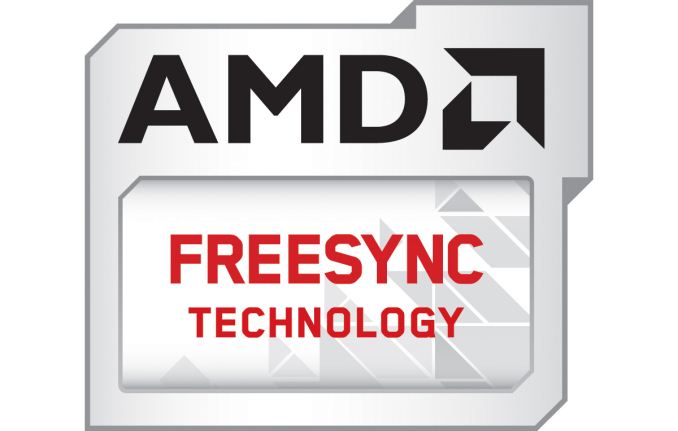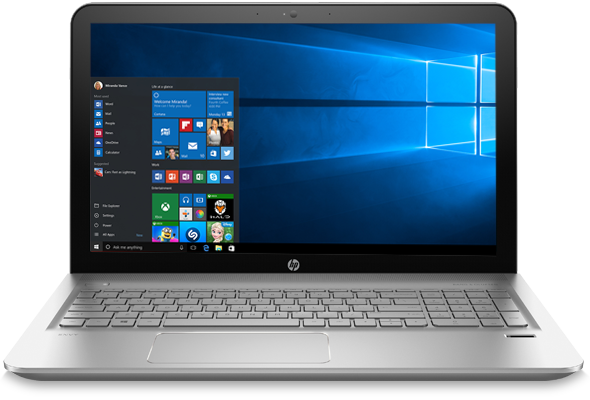HP’s New Laptops to Feature AMD FreeSync Technology
by Anton Shilov on February 12, 2016 8:30 AM EST
AMD has announced that the new versions HP’s Envy 15z laptops - powered by the company’s latest-generation A-series APUs - will feature the FreeSync variable refresh rate technology. In addition, all of HP’s consumer notebooks powered by AMD’s latest APUs will also get FreeSync tech in the second half of the year.
At present, only Lenovo’s IdeaPad Y700 laptop based on AMD’s Carrizo APU and Radeon R9 M380 graphics processor supports the FreeSync technology for notebooks. In the coming months, HP plans to release a new version of its Envy 15z laptop featuring AMD’s Carrizo APUs and the FreeSync technology. The current-gen HP Envy 15z notebooks are powered by AMD’s A10-8700P APU with the Radeon R6 graphics or AMD FX-8800P APU with the Radeon R7 graphics. The systems feature 15.6-inch displays with 1366x768 or 1920x1080 resolution and have a premium metallic finish to stay true to their Voodoo DNA.
On a brief aside, neither AMD nor HP mention whether the upcoming Envy 15z support dual-channel memory sub-system. At present, many Carrizo-based laptops use single-channel memory sub-systems, which negatively affects their performance, especially in graphics-intensive applications. Currently available HP Envy 15z can be equipped with either 6 GB (two DIMMs) or 8 GB (one DIMM) of DDR3L memory, so it is unclear whether they can support dual-channel mode or not.
What is, perhaps, more important, is that all HP laptops for consumers based on AMD’s 6th generation Carrizo APUs to be released in the second half of this year will also come with displays supporting the FreeSync technology. HP is one of AMD’s biggest customers and if it plans to enable FreeSync on a family of notebooks, this may be considered as a success for AMD.
AMD’s FreeSync technology is built on top of the panel self-refresh (PSR) feature of the eDP standard, which is used to cut-down power consumption of laptops when high refresh rates are not required. FreeSync is, of course, designed for a completely different purpose – to synchronize framerate with the display’s refresh rate, which requires additional software tweaking as well as special panels that support relatively high refresh rates. Lenovo’s Y700 laptop supports refresh rates between 40 and 60 Hz, which is a pretty narrow range: it not only limits benefits of FreeSync, but also does not support AMD’s low framerate compensation technology (LFC). It is hard to find laptop panels with a wide range of supported refresh rates, so, it will be interesting to see what kind of panels will PC makers plan to use for their AMD APU-based notebooks with FreeSync.
To enable AMD FreeSync on a PC, a graphics processor with the GCN 1.1 architecture is required. However, since FreeSync is primarily pitched towards gaming, some of the laptops featuring FreeSync will come equipped with an AMD APU as well as with an up-to-date mobile AMD Radeon 300-series discrete GPU (e.g., Bonaire, Tonga, Hawaii, etc.) to enable better performance in games. And for that reason, given AMD’s positions in the market of laptops, I expect AMD and its partners to address mainstream multimedia/gaming enthusiasts with their FreeSync-enabled notebooks.
Source: AMD











19 Comments
View All Comments
h4rm0ny - Saturday, February 13, 2016 - link
Don't feel stupid. To anyone who has grown up in a world of dual-channel it's an almost instinctive assumption. Single channel is antiquated for any decent processor like Carrizo. Hopefully HP will accept the small hit to their design costs and do a separate dual-channel design for these laptops. Articles like this might make them realize that not everybody buys a laptop based on just the bare numbers.tipoo - Friday, February 12, 2016 - link
HP has a pretty bad record for laptops with single channel iirc. Plus as an AMD model, as we saw with the other article, it's even more likely they skimped with the combined controller thing.harrkev - Friday, February 12, 2016 - link
I currently have an HP Pavilion with a Carrizo A10 (model 15-ab153nr) that I got from Office Depot.It had a single 8-GB module in it. I swapped that out for a pair of 4GB modules that I have lying around. It worked like a charm. I also swapped the HD with a SSD that I also was using on an older laptop. Good solid machine (except for the craptastic touch pad).
Other than the touchpad, my biggest complaint is that to upgrade RAM, you have to remove a LOT of screws. Apparently, HP does not expect anybody to upgrade a Pavilion.
valinor89 - Saturday, February 13, 2016 - link
But is the memory running as dual chanel?Gaugamela - Friday, February 12, 2016 - link
I would like to applaud Anandtech for exposing the OEMs for crippling AMD APU based notebooks with boards that only supoprt single channel memory besides the already costumary terrible TN panels, crappy battery capacities and slow HDDs.If more tech sites did the amazing job that you did the other day and exerted more pressure for the OEMs to offer decent systems powered by AMD APU's the consumers would have a much wider range of options to choose from.
Murloc - Friday, February 12, 2016 - link
fast HDDs still increase the cost too much in cheap laptops.If you shell out money, you can have an SSD and great battery life in an ultrabook.
As far as panels go, there are offering that cost even more to satisfy that need too.
Gaugamela - Sunday, February 14, 2016 - link
I don't want an ultrabook. I want an AMD system that isn't crippled.Fullmetaldwarf - Friday, February 12, 2016 - link
You do allready have laptops with AMD freesync tehnology,Asus N551ZU/ZE has that.Pameela - Thursday, March 10, 2016 - link
The current-gen HP Envy 15z notebooks are powered by AMD’s A10-8700P APU with the Radeon R6 graphics or AMD FX-8800P APU with the Radeon R7 graphics. The systems feature 15.6-inch displays with 1366x768 or 1920x1080 resolution and have a premium metallic finish to stay true to their Voodoo DNA. http://bit.ly/1p9z1me